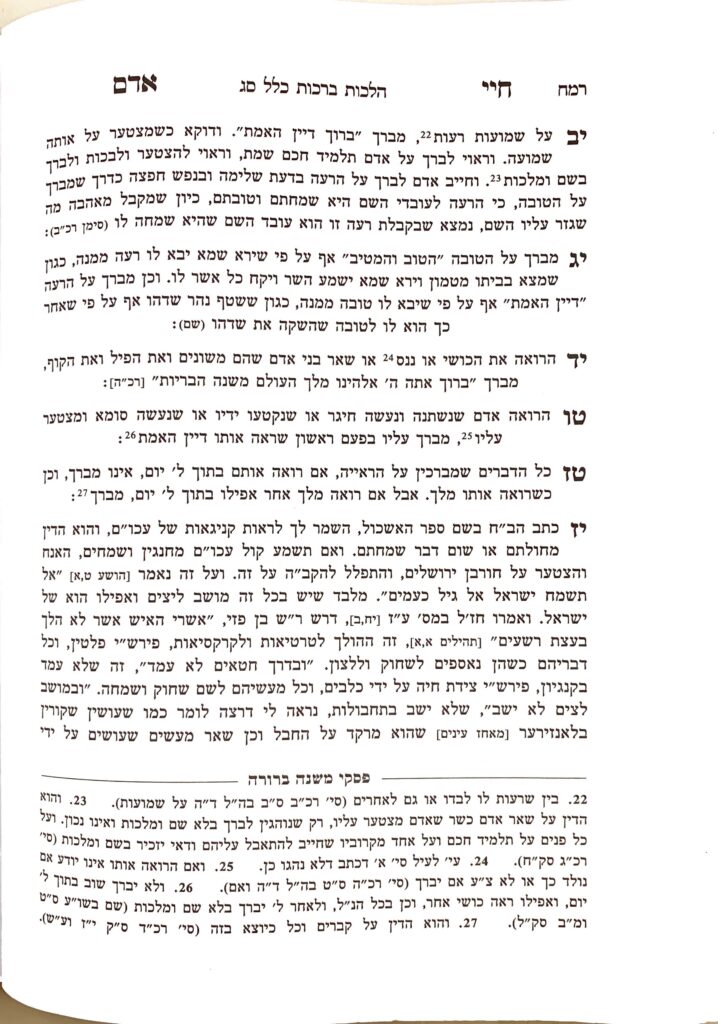We are beginning siman 16. The Chayei Adam writes that one does not repeat a bracha on a sight within 30 days, even if they see a different item of that sighting (e.g., a different ocean). However, if one sees a second king within 30 days, they do recite the bracha again, because the bracha made on the kavod of a king is unique to each king.
We have learned (shiur 1225) that this question comes up regarding the bracha made on a kivrei yisroel, when seeing a second cemetery, or when new graves have been added to the same cemetery. The Mishnah Berurah suggests that one should not make the bracha. However, Rav Ovadia Yosef ztl is quoted as holding that one can make the bracha on a different cemetery. The minhag of the contemporary Sephardi poskim is to follow Rav Ovadiah, but the Ashkenazi minhag is not to make the bracha.
In siman 17, the Chayei Adam moves away from the brachos on sights and discusses the appropriateness of various forms of entertainment. He quotes the Bach, who brings from Rishonim that one should not watch the kanigios of the goyim. Kanigios are understood to be referring to jousting, circuses, bullfights, horse racing, and any form of non-Jewish celebration. When a person sees or hears one of these celebrations, they should be upset, think about the destruction of the Beis Hamikdash and daven for its speedy rebuilding. The Chayei Adam quotes the pasuk al tismach yisroel el gil ka’amim, do not rejoice as the nations do, in reference to these venues.
Additionally, the Chayei Adam points out that these venues are considered a moshav leitzim, a gathering of scoffers. The Chayei Adam continues, and writes strongly against any forms of entertainment, as a person should focus on their avodas Hashem, learning and parnassah.
Rav Yosef Leib Bloch ztl speaks about this idea in Shiurei Daas, in a piece entitled paleis ma’agal raglecha, which literally means to measure the circle of one’s feet. He explains that a person must feel comfortable within the space they give themselves. If one is on the highest level, their space would simply consist of themselves and Hashem. However, most of us are not holding there, and must therefore give ourselves the downtime we need in order to refresh ourselves. Such time is not considered bitul torah, seeing that it is necessary for our level, but must be measured (paleis), in a general sense, to ensure we are using our time productively and meaningfully.
Summary
- One does not repeat a bracha on a sight within 30 days, even if they see a different item of that sighting.
- Sepharadim repeat the bracha of asher yotzar eschem badin upon seeing a second cemetery within 30 days.
- A person should measure their downtime to ensure it is being used in a productive, meaningful way that enables them to refresh themselves for avodas Hashem.



